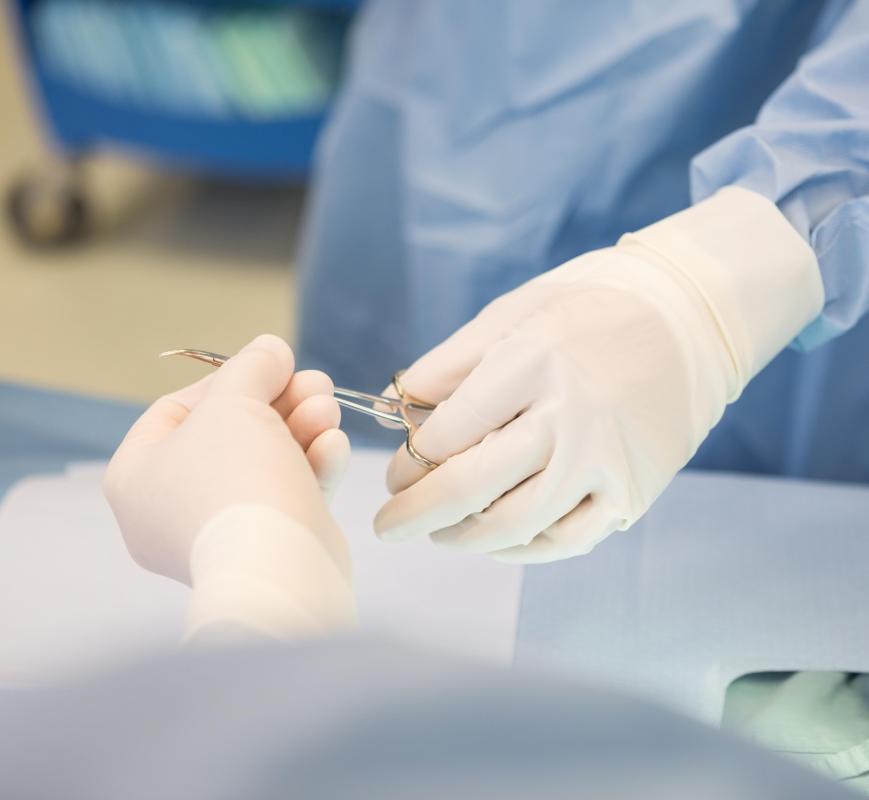At TheHealthBoard, we're committed to delivering accurate, trustworthy information. Our expert-authored content is rigorously fact-checked and sourced from credible authorities. Discover how we uphold the highest standards in providing you with reliable knowledge.
What Does It Mean If Something Is Non-Sterile?
The term "non-sterile" in medicine can refer to any items that do not meet the sterility assurance level (SAL) established by a region. The SAL basically implies that all items judged sterile have been cleaned and packaged to its standards. Without this guarantee, items can be judged contaminated. It doesn’t mean they’re dangerous or not useful, but they aren’t appropriate for all medical applications.
Even at local stores, customers may note bandages marked as non-sterile or sterile. Different types of gauze might or might not contain this label. It’s somewhat difficult to keep certain items sterile, like tape, because as soon as it is open and used, it begins to collect bacteria. For most home use, the sterility of an item is not that important because the germs it may collect are common ones to which people are often exposed. Some exceptions may exist if an individual is bandaging large wounds or is vulnerable to infections.

Even in a doctor’s office, much of the inventory is non-sterile. The jar of tongue depressors doesn’t often contain individually packaged items. It’s not likely that stethoscopes, tape or some kinds of cotton balls retain their sterility. Most things are kept clean or washed with alcohol. Nevertheless, even a chair in the office or the examining room table is non-sterile.

A few things at the doctor’s are sterile, like shots, some cotton swabs, and tools for small procedures. Essentially, doctors would keep sterile any items that invade the body, like a needle, or that are used in testing of bacteria or viruses. Physicians also typically observe clean and non-sterile procedures, such as washing the hands before gloving up to suture a wound. Efforts are made to keep things as clean as reasonably possible. Still, there is usually no way to make a non-sterile environment sterile in a place where people are coming and going, wearing the same scrubs all day long, and interacting with sick people.

Where sterility matters most is in hospitals. Almost all invasive procedures or surgeries must be conducted with sterile items, and they are preferably undergone in rooms that meet special standards. The line is blurry because people with injuries may come into emergency rooms and need surgical procedures done that aren’t perfectly sterile.
When possible, though, planned surgeries take place in operating rooms that are as reasonably free of contaminants as possible. Equipment, materials, and even the clothes worn by the hospital’s workers should be free of pathogens. Observing this protocol and avoiding the use of non-sterile items helps to reduce infection. On the other hand, once people are placed in a recovery room, their chance of infection increases because these rooms aren’t sterile.
AS FEATURED ON:
AS FEATURED ON:













Discuss this Article
Post your comments